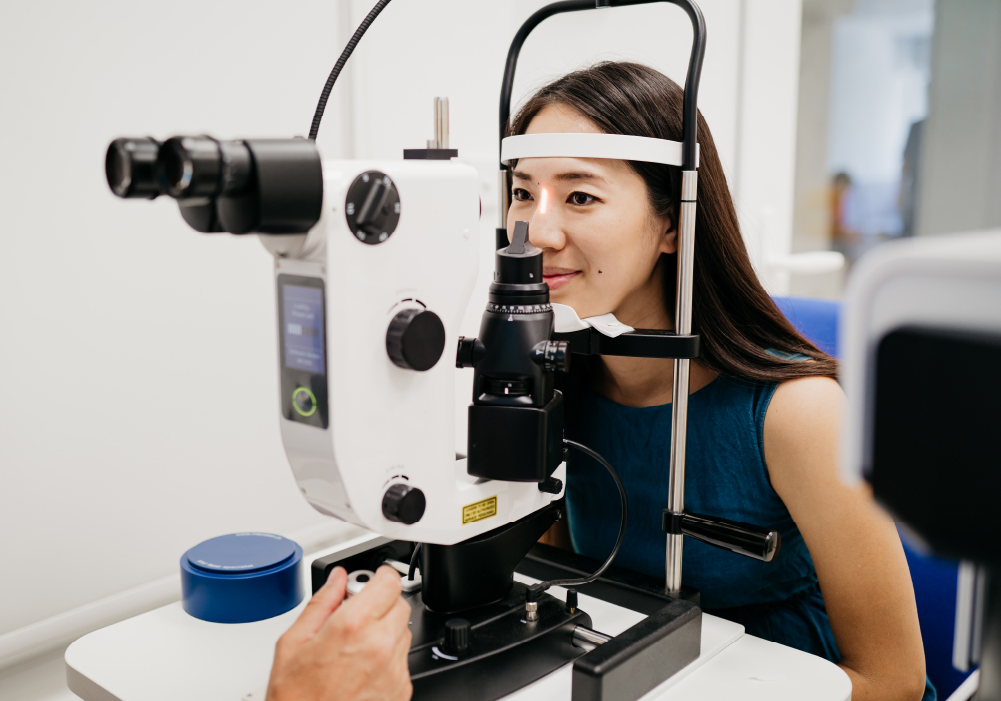Regular eye exams do more than just help you see clearly – they detect issues early on that could lead to vision loss. During a comprehensive eye exam, a provider examines your eyes through various tests to assess your vision, determine if you need corrective lenses, and check for eye diseases.
Many eye problems don’t show symptoms until they are advanced, so most people should have a comprehensive eye exam every one to two years. More frequent exams may be necessary if you are over 60, have a family history of eye disease, or have certain health conditions like diabetes.
What Happens During an Eye Exam?
An eye exam involves several steps and tools to give a thorough assessment of your eye health:
- Health and Family History: Your provider will start by asking about your overall health, medications, and family history of eye issues.
- Visual Acuity Test: This familiar test involves reading letters on a chart to measure how well you see at different distances.
- Refraction Test: Using a device called a phoropter, your provider finds the best lens prescription for you.
- Visual Field Test: This test assesses your peripheral vision by having you track an object as it moves in and out of your field of view.
- Color Vision Test: You’ll view images with colored dots to check for color blindness.
- Corneal Topography: A computer creates a detailed map of your cornea to identify any abnormalities.
- Ophthalmoscopy: After dilating your pupils with eye drops, the provider uses a light to examine the retina, optic nerve, and blood vessels at the back of your eye.
- Slit-Lamp Exam: This test uses a microscope to closely inspect the front parts of your eyes, including the cornea and lens.
- Tonometry: Measures your eye pressure to screen for glaucoma.
- Fundus Photography and OCT: These imaging tests provide detailed pictures of your retina and optic nerve, helping to identify any potential issues.
After the Eye Exam
If your pupils were dilated, expect blurred vision and light sensitivity for a few hours post-exam. Avoid driving and screen time until your vision returns to normal. Your provider will usually share results immediately, including any prescriptions needed for glasses or contacts and recommendations for follow-up appointments.
Source: clevelandclinic.org




